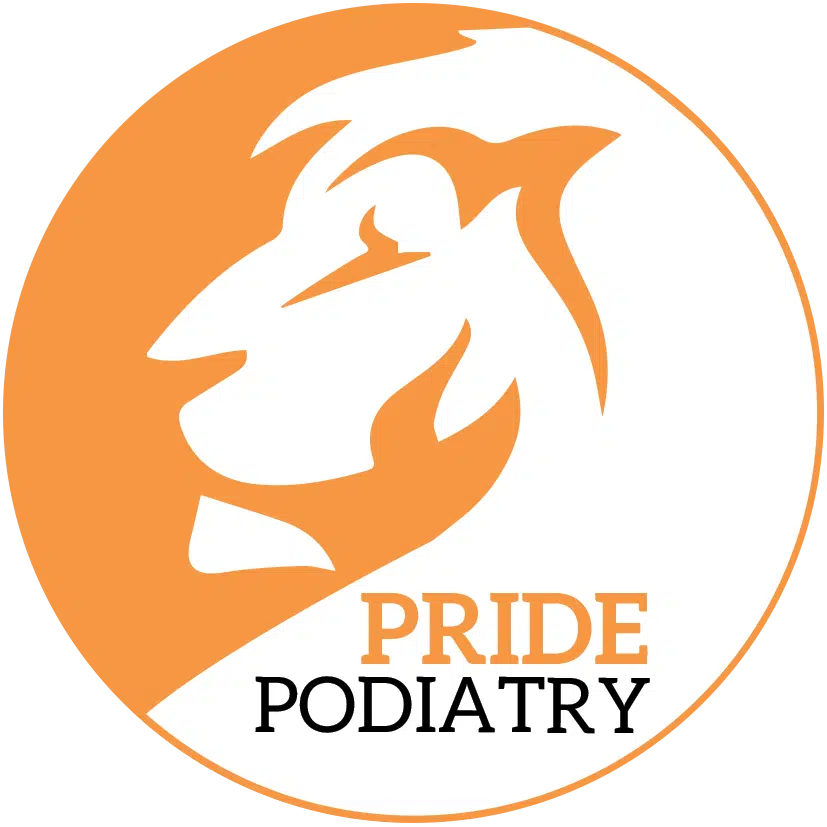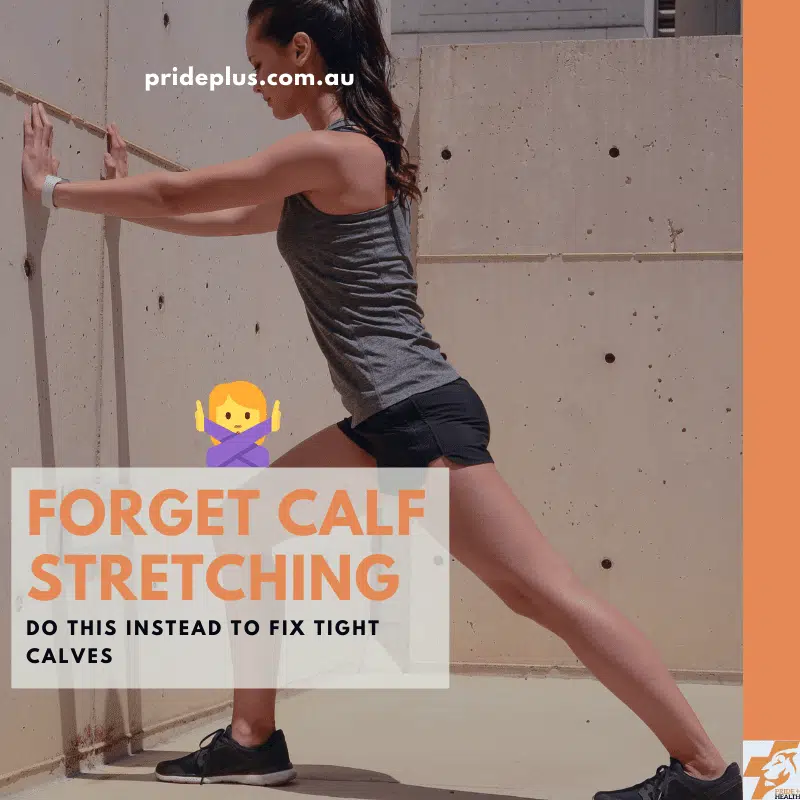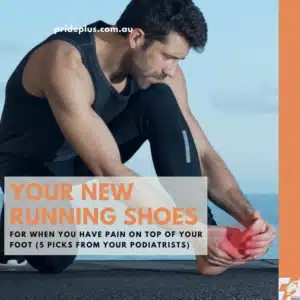Does calf stretching even help fix tight calves? Our podiatrists and physiotherapists are to explain as well as solve your tight calf issues.
Hands up, who here has been told to stretch your calf muscles? Everyone? And who here actually does it every single day? Right, almost no-one.
We often feel tight in the calf muscles. It might be in the morning when you first get up and step out of bed. Or you might feel tight after a big walk. And calf stretching inherently feels like the right answer. I couldn’t tell you how many times I’ve seen joggers warming up in the park one leg stretched out behind the other. The calf stretch just feels like it’s part of being human.
But the idea of a calf stretch is still a reasonably new phenomenon. As you can see from the graph below, calf stretching really only gained steam in the 1970s. Calf stretching built up a cult like following through the 1990’s into the 2000’s since just after we all lost our minds over the Y2K bug, we’re also losing our passion for the calf stretch.
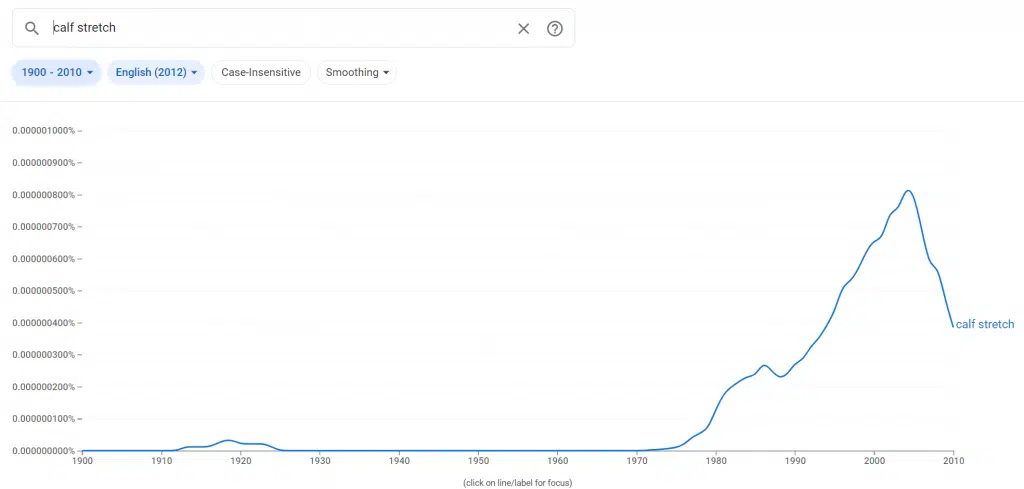
An interesting side note was that just after world war one the calf stretch was first documented in writing although it never gained any traction and slipped out of use by 1924.
So what about that dip from the peaks of 2004? Was 2004 the year that we learned that stretching our calves and deep V-neck tee shirts on men were not good ideas? Why is the calf stretch falling out of favour?
The short answer is – it doesn’t work!
That’s right. Calf stretching will not fix tight calves.
All those hours you have spent thinking (and feeling) at the time that you’re stretching out and loosening up your tight calf muscles and it’s all for naught. Well, it’s not quite naught, as two things are happening. When you stretch your calves that good feeling that you get is still a good feeling. There’s no discounting that. For most of us that good feeling is a combination of the belief that we are helping – a sort of placebo effect – and also a short term increase in the overall length of our calves.
Wait, didn’t you just say calf stretching doesn’t work?
Stick with me here.
What Happens During A Calf Stretch
The short term feeling of a longer calf is actually that, for a very short period of time (as in hours) your calf muscle will appear to be a little bit longer. But it will go straight back to it’s shorter and tighter length if you don’t do the extra step we’ll get to shortly. (Spoiler alert – it’s my favourite exercise the calf raise).
But this short term effect is not particularly good for us, especially if we are warming up for physical activity. You see that longer calf actually comes at the expense of some damage to the sinews that make up the calf muscle unit. You’re pulling and pulling the muscle longer which can then inhibit performance particularly if the physical activity you’re about to undertake is a power, speed or plyometric (bouncy) type activity.
So by now we are coming around to the idea that spending long periods of time stretching out our calves might feel good in the short term but could actually be bad for us. What’s the solution for our tight muscles? (Hint again, it’s still calf raises)
Let’s talk why our calves feel tight.
Your calf muscles will feel tight if they are overused, or used close to their capacity. Think about when you do feel tight calves. For strong active people feeling tight calves will usually happen after a big increase in calf loading. A longer run. The first training session of the season. A load that is much higher than the recent baseline.
For those of us who are less active and struggling to reach our recommended physical activity levels each week. 30 minutes of cardio and 2 sessions of weight training we might feel tight calves often.
At these times our calf muscles (the two main ones called soleus and gastrocnemius) are being used close to their maximum just living our lives.
The solution for both the active or less active person with tight calves is to increase the strength & length of your calf muscles. And the only way to do that is via sarcomerogenisis.
Tight Calves vs. Sarcomerogenesis
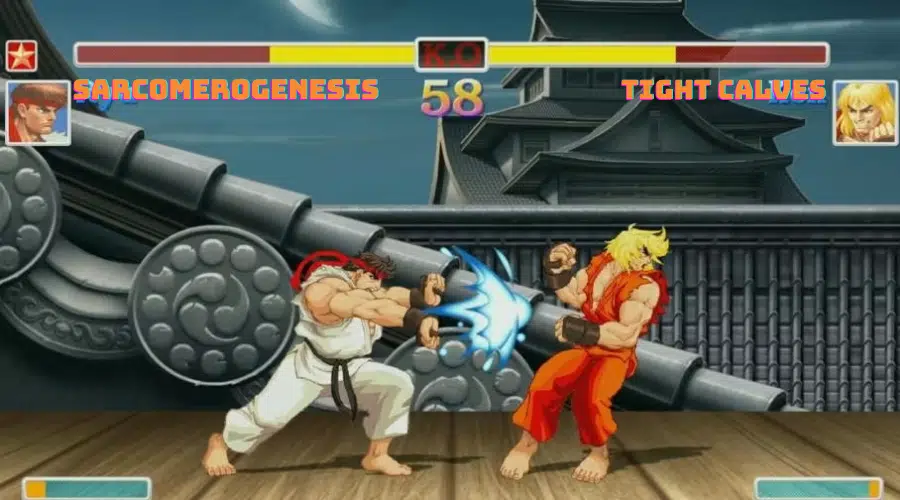
Sarcomerogenesis is not just a great name for a street fighter character, it’s the name of the process where a muscle gets longer and stronger in response to resistance exercise. A muscle is made up of sarcomeres, these are the contractile units that provide power, strength and movement. With sarcomerogenesis you’re simply building more of them.
In weightlifting for body building when the goal is to build muscle bulk, the focus is to build sarcomeres next to each other. This makes a muscle wider and girthier (yeah that’s a word). To fix tight calves the goal is to build your sarcomeres in line with one another. So your muscle is getting longer. To do this for your calf we need to get done the greatest exercise in the world.
Finally, we’re talking calf raises
Calf Raises For Long, Strong Calves
The calf raise is one of those exercises that gets overlooked at the gym by many. For some it’s not as important as building the beach muscles up top. But the calf raise can be completed as part of a routine to completely banish the feeling of tight calves.
There are two variations of the calf raise to consider as there are two muscles in the calf you need to get longer and stronger. The first version is the standing calf raise. This one targets the muscle known as gastrocnemius.
Standing Calf Raise
With a standing calf raise you need to have a step or a ledge. Something where the ball of your foot is on the step and your heel has plenty of room to hang free. If you don’t have stairs at home this exercise stepper from Amazon basics is under $30 and very stable, I use one of these myself.
Use this as your starting position. From here the calf raise involves rising up high onto your tip toes and then lowering down as low as you can. You should get your heels down below the edge of the step.
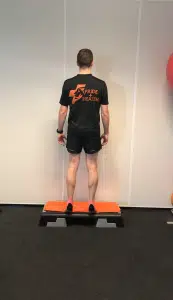
This movement up onto your toes and back down should be very slow, steady and controlled. Your not looking to bop up and down. In a perfect world it would take 4 seconds to slowly rise up onto your toes, and then another 4 seconds to slowly lower back down. Whilst doing this movement it’s best to keep your balance and avoid tilting your heels in or out. We mostly do this as we reach up high onto our toes as it’s easy for us to lean out onto our little toes. Fight this urge.
Aim to keep your balance and load through your big toe as you rise up and down. In this way your heel stays level throughout and you won’t overtrain the inner or outer calf muscle areas.
The last part to consider when completing this exercise is the dosage. Exercise dosing is as important as dosing medicines. Too much and your paracetamol for your headache will shut down your liver. Too many reps or too little will build endurance or nothing at all when you’re aiming to get your calves long and strong.
Ideally you should complete your calf raise repetitions slowly and stop when you feel exhausted in your calf. That tired feeling that makes it hard to rise again. For others it feels like your calf is momentarily shaky or a bit jelly like. This is really pushing it but from this feeling we get increased strength. If you get to this feeling and you’re doing around 10 – 15 repetitions you’re on track. If it takes more than this we need to make the exercise harder, and we do that by adding more weight.
Standing on two feet and completing both at the same time is the low weight setting. Next up, we add weight by completing single leg calf raises. Just the left foot with the right hovering in the air, then just the right side. Finally, when that becomes easy we add more weight with external measures. Backpacks or weight vests or bars and plates at the gym.
If you’re able to complete a single set of straight leg calf raises, to fatigue you are halfway there to getting rid of your tight calves. The other half comes from a bent leg calf raise.
Bent Leg Calf Raise
This exercise can be performed exactly the same as the standing straight leg calf raise OR it can be performed sitting down.
The standing version involves setting up and completing the exact same movement as the straight leg EXCEPT you keep your knee in a bent or flexed position. The trick with this is to keep your knee bent at the same angle the entire time.
I find the easiest way to set up for this exercise is to stand on the step and then start squatting back like I’m about to sit on a chair behind me. As my knee gets to around 45 degrees (90 degrees would be sitting exactly level on a chair) hold that starting position. From there it’s simply a matter of completing my calf raises lifting and lowering my heel on the step. Same queues. Slow, big toe. Stop when my calf muscle is cooked. This time it will be the deeper muscle known as soleus.
Some of us find this really tricky as you need decent quadricep strength to keep your knee still and bent the whole time. The seated calf raise comes into play here.
Bring a seat forwards and place just in front of the same step. Sit down on the seat and place your toes on the step just as you would for a standing calf raise. This is your starting position.
Now, we have to add some weights. Considering we’re not going to have the benefit of our body weight for this exercise we really need to add a fair amount of Kgs (some more than others) to match what we would be doing standing. As this can be tricky there are multiple machines at the gym built just for this purpose.
Same rules again for the dosage and technique. Slow, big toe as the reference point and stop when you feel the fatigue through your calf. Aim to get to that point by adding more weights and feeling tired around 10 – 15 repetitions. With this movement it’s your ankle joint that is moving up and down, your knee should stay locked tight at that ~45 degree angle.
If you can complete a set of straight leg and bent leg calf raises you’ll be telling your body it needs to build a long strong calf. And with consistency, rest and recovery you will. For most of us who lead already active lives completing these exercises every 2nd day (or around 3 days per week) will be more than enough to fix tight calves for good.
Before you go…
We’ve written a FAQ about calf stretching with heaps more information for you below. But truly, we want to help you. If you’re calves are feeling tight and the idea of doing any resistance exercise feels too difficult to start. That’s alright. We’ve helped plenty of people start their journey back to supple calves via the gateway drug that is a calf push up. It’s easy (you can do it for hours if you want) and it can be the start of your path back to resistance exercises to get long, strong and supple calf muscles again.
FAQ about Calf Stretching
How do the calf muscles work?
The calf muscles (we’re going to focus on the soleus and gastrocnemius muscle only here) work in two ways. First, the soleus muscle pulls on our achilles tendon to make it nice and taut. Then the soleus and gastrocnemius muscle pull together on the achilles tendon (which pulls on the calcaneus heel bone) to pick us up and move us forwards.
In combination, the calf muscles provide the power for forward movement when walking and running. They also provide upward movement for jumping too.
An interesting new development in our understanding of calf muscles is how your soleus is a power house of sugar-burning metabolism. Check out these calf push-up exercises if you want to burn carbs while you sit.
How do you loosen tight calf muscles?
You can only temporarily loosen tight calf muscles with stretching and this can also be harmful to performance. The best way to prevent your calf muscles from getting tight is not not do calf muscle stretches, but to do a calf workout. Combine the straight knee and bent knee calf raise exercises on this page and you’ll have a long strong calf that no longer feels tight.
What are the benefits of calf stretches?
There are not many benefits of calf stretches compared to alternatives. With calf tightness you’re body is telling you that your calf muscles need to be stronger and longer. If you do regular stretching or dynamic stretches this will not make them stronger.
There is one benefit of calf stretches however. For some people they really feel good. Sadly for me, I don’t get this rush from completing a calf stretch. If you’re someone who genuinely enjoys a calf stretch then in moderation they will be OK for you. But maybe take on board these health tips to complete calf raise exercises a couple of days per week and you won’t feel calf tightness any more.
What are some good stretches for your calf muscle?
There are no good stretches for your calf muscle but there are good calf exercises to do. Straight knee calf raises. Bent knee calf raises. Seated calf raises. Calf raises in a lying position.
What about calf pain when I exercise?
This guide is about calf tightness not calf pain. There can be a number of different injuries that can lead to calf pain including a couple of very serious ones. A DVT (deep vein thrombosis) can be a life threatening condition where a clot forms in the veins in the calf. If you have calf pain and a DVT is a possibility head to the nearest emergency department immediately.
I’ve been told that calf stretching treats plantar fasciitis. Is this not true?
For many years calf muscle stretches have been part the treatment of plantar fasciitis. For some there was success and heel pain levels improved. As an initial treatment it’s probably not going to be too risky to start either. Again, just like calf stretching feels like the right thing to do for tight calf muscles, for many people with plantar fasciitis it also “feels good” to stretch out the calves.
However, in both this podiatrists experience as well as in the emerging literature calf stretching alone is not a very effective treatment for plantar fasciitis. In fact, the biggest challenge with plantar fasciitis treatment is that there are more than 6 kinds of heel pain. Half the time people think they have plantar fasciitis but it’s actually something else. To help we created an online test, if you have heel pain, check it out for free here. There could be more effective exercises for your chronic heel pain.
About the Author

Tim Mulholland is a podiatrist in Pascoe Vale and clinical educator. He’s spent more that 10 years thinking about feet and in that time he’s saved thousands of hours of wasted calf stretches by helping people switch to a calf raise. If you know someone who needs to make the switch too share this blog with them.
